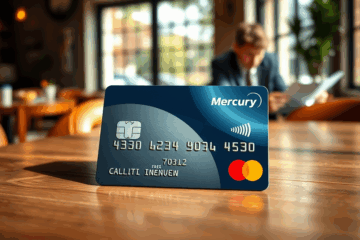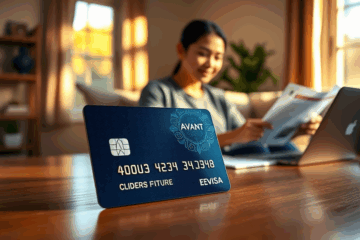Effortless Ways to Pay Bills with a Credit Card
Credit Card payments have become an increasingly popular method for managing bills, offering convenience and potential rewards.
In this article, we will explore the various ways you can pay your bills with a credit card.
From checking if your service provider accepts credit card payments to utilizing third-party services for those that don’t, we will guide you through the steps to effectively use your credit card for bill payments.
Additionally, we will highlight the importance of being aware of any associated fees and the benefits of setting up autopay through your credit card.
Why Use a Credit Card for Monthly Bills
Why use a credit card for your monthly bills? Harnessing your credit card can transform the mundane task of bill payments into a rewarding financial strategy.
Consider the convenience it offers—no scrambling for checkbooks or mailing envelopes.
You simplify your finances by managing everything through one powerful tool.
Capital One highlights how seamless transactions can be when you use credit cards effectively.
- Convenience you can count on
- Earn rewards while spending
- Maintain a flexible cash flow
By strategically using your card, you not only keep chaos at bay but also potentially earn rewards like cash back, points, or miles.
Services such as utilities, phone companies, and subscription providers often accept credit card payments.
It’s important to check if your service provider supports this option.
In the upcoming sections, we’ll delve into verifying which bills accept cards, explore payment methods and the rewards landscape, and discuss how to avoid fees and effortlessly automate payments.
By the end, you’ll discover how to maximize benefits while avoiding pitfalls, ensuring your financial life runs like a well-oiled machine.
Confirming Acceptance with Your Providers
To ensure seamless transactions with your utility, phone, streaming, or insurance provider, it’s essential to verify their acceptance of credit card payments.
Begin by reviewing your billing statement since it often indicates accepted payment methods along with specific instructions.
If not clearly stated, visit the provider’s official website where payment information is typically located in the billing or payment section, providing details on whether credit cards are accepted.
Alternatively, reaching out to the provider’s customer service can offer direct confirmation, allowing you to ask about any associated fees as well.
If your provider offers an app, explore the payment settings or account options there for additional insights into payment methods.
Confirming payment acceptance is necessary to avoid inconveniences.
Credit card payments can help maximize benefits such as reward points or cash back.
However, if cards aren’t accepted, consider using third-party services like Plastiq, which facilitate credit card payments for a fee.
For providers requiring alternative methods, options such as ACH transfers or setting up a bank account auto-draft are viable.
Ensuring you maintain this knowledge can significantly streamline your payment processes while optimizing financial benefits.
Paying Through Official Websites and Apps
Paying your bills through service-provider websites or mobile apps can be a convenient and secure way to manage your finances.
Utilizing these platforms allows you to streamline the process, ensuring you keep up with payment deadlines effectively.
Follow this simple, step-by-step approach to make sure your transactions run smoothly:1. Log in securely: Begin by entering your username and password on the provider’s website or app.
Consider enabling two-factor authentication for an added layer of security, as recommended by experts here.
2. Select the payment method: Navigate to the payment section, and choose to pay by credit card.
3. Enter your credit-card details: Input your card information carefully, ensuring accuracy to prevent errors.
4. Review and confirm: Double-check all the details like the amount and payee, then confirm the payment.
Be mindful that some services might charge a fee at this step.
5. Receive digital receipt: After payment, the system typically provides a digital receipt.
These receipts can be saved digitally, allowing easy access for future reference.
Ensuring your payments are handled via secure mobility apps makes paying bills less of a hassle, while also taking advantage of digital convenience.
When to Turn to Third-Party Services
When a biller won’t accept credit cards directly, third-party services can act as intermediaries, allowing you to use your credit card to settle bills.
This strategy can be particularly beneficial as it helps in earning rewards like cashback or points.
However, these conveniences do not come without costs.
For example, services such as Plastiq, and OnlineCheckWriter let you use credit cards for payments to vendors that do not accept cards directly.
Below is a simple table outlining the typical fees associated with some of these services:
| Service | Typical Fee |
|---|---|
| Plastiq | 2.5% |
| BILL Pay By Card | 2.9% |
| OnlineCheckWriter | Variable |
While these platforms provide valuable flexibility, it’s essential to consider their added costs and possible processing delays.
Using these services makes sense if you stand to gain significant rewards that outweigh the fee.
Yet, it’s critical to assess whether the fees justify the benefits and to monitor processing times to avoid late payments.
Ultimately, understanding the trade-offs will help you use these platforms wisely.
Getting the Most from Card Rewards
When optimizing credit card rewards, understanding different reward types is crucial.
Cash-back cards offer a percentage of your spending back, which can be a straightforward way to earn.
For those who travel frequently, selecting a card that accumulates miles might be more valuable, as it can cover airfare or hotel expenses.
Points-based cards often provide flexibility, allowing you to redeem for a variety of rewards such as travel, merchandise, or even cash.
To decide which type best suits you, consider your spending habits and personal goals.
Charging regular expenses like groceries and utility bills can accelerate your rewards and, when done strategically, reduce overall costs.
Remember, always read your card’s fine print before relying on rewards to ensure no hidden pitfalls.
To maximize these rewards, use cards offering category bonuses where your highest spending occurs.
Cards that provide rotating bonus categories or higher earnings on bills allow you to tailor your strategy to your lifestyle.
It’s essential to combine your points or miles whenever possible, amplifying their potential.
Moreover, look for cards with substantial welcome bonuses, yet be cautious of the spending thresholds required for these benefits.
By using the right card for the right purchase and paying your balance in full each month, you can avoid interest and take full advantage of these rewarding programs, ensuring you’re optimizing benefits seamlessly.
Spotting and Reducing Extra Costs
When using credit cards to pay bills, you may encounter a variety of fees that can inflate your costs.
Recognizing these extra charges is crucial to avoid unnecessary expenses.
One of the most common fees is a convenience fee, which some service providers charge for transactions made with a credit card.
This fee compensates for the processing cost incurred.
To identify these charges ahead of time, scrutinize your billing statements and confirm the payment terms on service provider websites, such as those of utility or phone companies.
Moreover, some companies impose a processing surcharge for credit card payments, particularly for substantial bills like rent or tuition.
Furthermore, interest can build quickly when you carry over a balance on your credit card.
Interest compounds daily if you do not pay in full, significantly increasing your debt.
To mitigate these costs, opt for no-fee portals or consider services like Plastiq that allow strategic payment timing.
Always aim to maintain a zero balance to skirt high-interest charges.
Through diligent monitoring and strategic payment decisions, you can effectively minimize these financial burdens.
Setting Up Auto-Pay for Peace of Mind
To set up automatic bill payments with your credit card, start by logging into your service provider’s online portal; navigate to the payment options section; and select “autopay” to proceed.
If the provider does not offer direct credit card payments, consider using trusted third-party apps like Synchrony Autopay, which facilitate seamless automatic payments.
After choosing your payment method, set the date that aligns with your billing cycle to avoid interest accrual; make sure it’s a few days before your payment due date to allow processing time.
Ensuring timely payments requires vigilance in monitoring your transactions and receiving notifications; enable notifications offered by your credit card issuer for every payment processed.
Using these alerts helps you keep an eye on any unexpected charges and adjustments needed.
It’s advisable to monitor your available credit frequently to prevent declines due to insufficient credit limits which could disrupt your financial planning.
Additionally, keep track of your bank statements to ensure that all payments were processed correctly.
Dealing with unexpected charges efficiently helps maintain your credit score.
Be proactive in managing your credit limit as it affects your capacity to make automatic payments.
Implementing these steps reduces the risk of missed payments and helps you capitalize on any rewards your card may offer.
In conclusion, utilizing your credit card for bill payments can streamline your finances while offering rewards.
By following the steps outlined in this article, you can make informed decisions and enjoy the benefits of credit card bill payments.



0 Comments